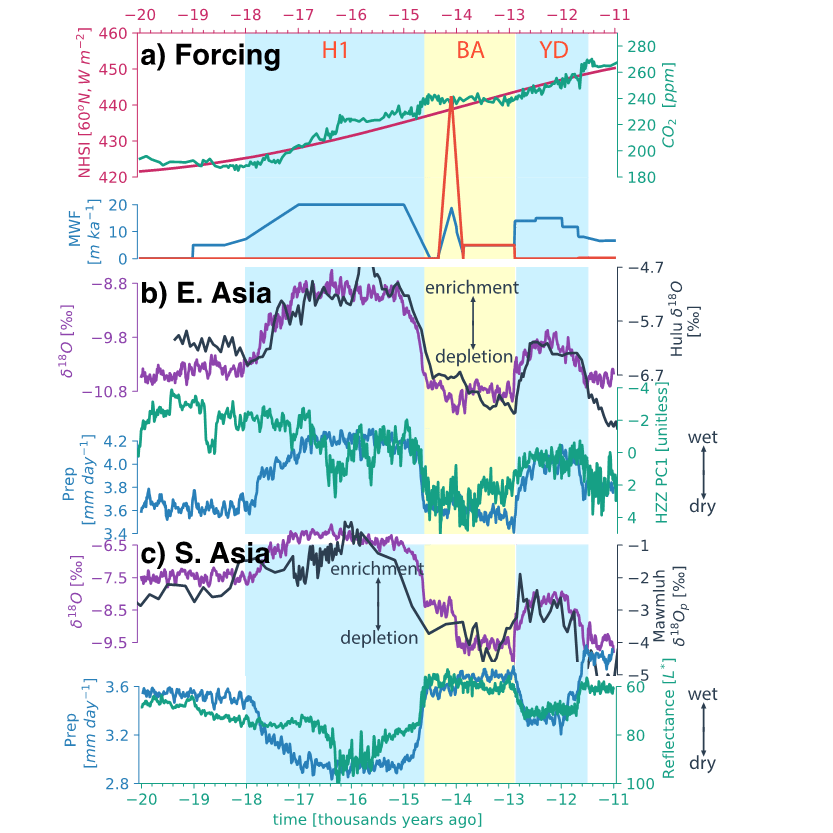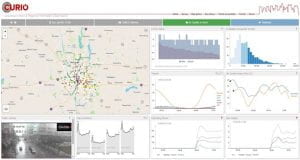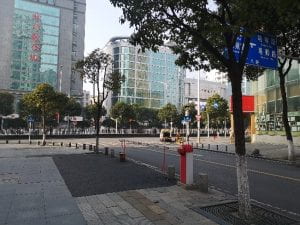
Hamilton Pub. Co; First Printing, Fep Torn edition (1973)
I have a number of textbooks on my shelf, many old and out of date, picked up from piles left behind by retiring faculty. One is by a rather famous father-son pair of physical geographers, Strahler and Strahler called, “Environmental Geoscience: Interaction between natural systems and Man,” published in 1973. In the preface, the authors reflect that an “unprecedented explosion of public and academic interest in environmental problems within the last three years has stimulated the birth of a new discipline: environmental science.” How profound; Earth Day and Environmental Science got started in 1970…kinda like me! As Strahler and Strahler recognized, environmental science as a discipline is not a wholly new science, but rather a mix of traditional ones of biology, chemistry, physics and the geosciences. Instead, the novelty is in the “viewpoint – its orientation to global problems, its conception of the earth as a set of interlocking, interacting systems, and its interest in Man as part of these systems.” Notwithstanding the antiquated phrasing, this “Earth System Science” perspective has been the basis of my entire trajectory into Geography, and frames a reflection on where we are now, and more specifically where I am, since this chronology also neatly spans my entire life.

Photo courtesy of Byrd Polar Research Center
My path to Geography was as serendipitous and unintended as any undergrad who has no formal exposure to Geography until university –or as in my case, not until graduate school. I initially declared a Physics major in college, mostly because it was my favorite class in high school, but I lost passion for it after a frustrating bout with differential equations, and so reverted to History. Had I known of a discipline like Geography, or had it existed in my undergraduate institution, my course may have been different; instead, I had to first find my way to Geology and realize it was more than minerals and oil prospecting. During my senior year, in a Geology graduate seminar called, “Meteorological Aspects of Climatic Change” taught by Professor Thompson Webb[1], I first caught a glimpse of what Physical Geography held in store. We not only collected observations to appreciate basic dynamics of weather, but puzzled over long-term climate variability. This was it. This was the moment that would define my path. It was the implicit coupling of water and ice to society by the glacial shaping of the landscape that really fascinated me, and I wanted to learn more. The only problem was, it was too late for me to switch majors. Instead, my prof nudged me to consider Geography as a grad school option. Thanks, Tom! 
I’ve now come to appreciate that human connections to the environment not only integrate our diverse discipline but also sustain our society. For me, this human-natural coupling manifests vitally in the Andes, where we have researched various aspects of the reality of glacier loss, water and society. Yet it has been through very specific human relationships and personalities that I have experienced it.
I first got to the Andes in college during a winter break climbing trip. I was amazed. In a two week transect from the Pacific coast to the highest point in the western hemisphere, the diverse geography claimed a piece of my heart, even though I was unaware I’d ever return. While prepping for another climb in Alaska, I met Bradford Washburn and Barbara Washburn[2], the adventurous couple who climbed many Alaskan mountains together including Denali, Barbara becoming the first woman to reach the summit.  After the evening lecture about his Everest map-making adventure, Barbara by his side, I asked them how I might do things like that; he said he thought Ohio State had a decent program. With only that comment to guide me, I applied to graduate school at OSU. There, under the advising of another female pioneer, Distinguished Professor Ellen Mosley Thompson, I completed a thesis on snow accumulation at South Pole[3] while specializing in climatology. I met Geoffrey Seltzer[4], a Byrd Postdoctoral Fellow, who was teaching Hydrogeology. Geoff had earned his PhD under Herb Wright, a legendary figure in Quaternary studies[5], and was establishing prominence for his expertise in the glacial geology of tropical Central Andes of Peru and Bolivia. I was inspired and had finally found my tribe. Not only was I drawn in by the prospect of getting back to the Andes, but also by Geoff’s field-based style of research. So, I went to Syracuse University to be among Geoff’s first PhD students. He had been funded to examine more closely the ages of low-latitude tropical Andean glacier advances during the last glacial maximum (LGM) along with collaborators Don Rodbell, another Byrd Fellow, and Mark Abbott.
After the evening lecture about his Everest map-making adventure, Barbara by his side, I asked them how I might do things like that; he said he thought Ohio State had a decent program. With only that comment to guide me, I applied to graduate school at OSU. There, under the advising of another female pioneer, Distinguished Professor Ellen Mosley Thompson, I completed a thesis on snow accumulation at South Pole[3] while specializing in climatology. I met Geoffrey Seltzer[4], a Byrd Postdoctoral Fellow, who was teaching Hydrogeology. Geoff had earned his PhD under Herb Wright, a legendary figure in Quaternary studies[5], and was establishing prominence for his expertise in the glacial geology of tropical Central Andes of Peru and Bolivia. I was inspired and had finally found my tribe. Not only was I drawn in by the prospect of getting back to the Andes, but also by Geoff’s field-based style of research. So, I went to Syracuse University to be among Geoff’s first PhD students. He had been funded to examine more closely the ages of low-latitude tropical Andean glacier advances during the last glacial maximum (LGM) along with collaborators Don Rodbell, another Byrd Fellow, and Mark Abbott.

My dissertation research in the Andes began by considering the history of climate told by ancient glaciers, but never got too far from the people living below them. These glaciers housed eons of history but the people living below them relied on them for theirs existence, their culture, and their future. The last chapter of my dissertation emerged after I got a Fulbright to live in Peru and begin to assess the importance of modern glacier melt to stream flow. There, I tracked down the Peruvian co-author on a paper with Stephan Hastenrath, Alcides Ames[6]. Alcides had photographed and surveyed many glaciers starting in the 1960’s, and his meticulous photogrammetry allowed for invaluable mass change values to be computed and analyzed. Nevertheless, post-Fujimori Peru was not favorable to stable employment in glacial studies; Alcides ended up with unreliable income and pension, so he opened a guesthouse. He welcomed me to his home, and family, and I’ve now returned nearly annually with crews of students, collaborating professors and postdocs; exposing them to the people and places that have become a second home to me. I can only hope that their experiences are as awe-inspiring and as life-changing as mine were.

Shallap Glacier, Cordillera Blanca, Peru. Photo credit for left (1966), Alcides Ames; Photo credit for right (2019) Bryan Mark
We’ve followed in Alcides’ footsteps to quantify the volume loss of glaciers with geodetic methods that have extended from backpacked GPS point surveys to aerial LiDAR[7] to drones[8]. Byrd Polar’s own trained photogrammetrist, Henry Brecher, assisted in mapping 1962 base levels to compare. We’ve found an accelerating retreat of glaciers and an alteration in the seasonality and quality of streams below — and risks to water access in these systems are heterogeneous, dynamic, and interlinked[9]. Our Glacier Environmental Change group finds varied opportunities to ‘trace’ glaciers: whether it be the literal trace of their past presence on the landscape in the form of moraines, wetlands and glacial lakes, or the computation of their 3D mass loss, or the flow of melt-water emanating from them. I am motivated by seeking transdisciplinary[10] insights into the unprecedented changes we are facing in our interconnected yet fractious world. 50 years post Earth Day, we have many more vivid portraits of how our society-altered biogeochemistry interlinks our livelihoods with Andean glacier fate, underscoring needs for change. If and how knowledge translates to social change remains a daunting unknown, and a personal challenge. For example, if we know that our energy conversion is redistributing carbon to alter the hydrological fluxes…and melt the glaciers in the Andes…how should this alter what we do as researchers, and how we do it? I’m not sure. But it is my experience of Geography that our motivation needs to consider our interconnectedness and that it translates to very real relationships, and not abstractions.
Bryan Mark
Professor, Geography
State Climatologist of Ohio
[1] Thompson Webb, Professor Emeritus, Brown University: https://vivo.brown.edu/display/twebbiii
[2] Short reflections on long lives of Barbara http://publications.americanalpineclub.org/articles/13201213112, and Bradford http://publications.americanalpineclub.org/articles/12200747600.
[3] Van der Veen, C. J., E. Mosley-Thompson, A. J. Gow, and B. G. Mark. Accumulation at South Pole: comparison of two 900-year records. Journal of Geophysical Research, 104 (D24), 31,067-31,076.
[4] Geoff died too early; Mark, B.G., D.T. Rodbell, J. Brigham-Grette and J.A. Smith. Dr. Geoffrey Owen Seltzer: In Memorium. Quaternary International 138-139, 1-4.
[5] Birks, H.J.B. (2017). Herbert E. Wright Jr. (1917-2015): A Biographical Memior. National Academy of Sciences Biographical Memoirs: http://www.nasonline.org/publications/biographical-memoirs/memoir-pdfs/wright-herbert.pdf.
[6] Hastenrath, S. & A. Ames (1995) Recession of Yanamarey Glacier in Cordillera Blanca, Peru, during the 20th century. Journal of Glaciology, 41, 191-196.
[7] PhD dissertation of Kyung In Huh (2014); Huh, K.I., B.G. Mark, Y. Ahn and C. Hopkinson. Volume change of tropical Peruvian glaciers from multi-temporal digital elevation models (DEMs) and its volume surface area scaling. Geografiska Annaler: Series A, Physical Geography 99(3), 222-239.
[8] PhD dissertation of “Ollie” Wigmore (2017); Wigmore, O., B. Mark, J. McKenzie, M. Baraer & L. Lautz (2019) Sub-metre mapping of surface soil moisture in proglacial valleys of the tropical Andes using a multispectral unmanned aerial vehicle. Remote Sensing of Environment, 222, 104-118.
[9] Mark, B. G., A. French, M. Baraer, M. Carey, J. Bury, K. R. Young, M. H. Polk, O. Wigmore†, P. Lagos, R. Crumley†, J. M. McKenzie & L. Lautz (2017) Glacier loss and hydro-social risks in the Peruvian Andes. Global and Planetary Change 159, 61-76. https://doi.org/10.1016/j.gloplacha.2017.10.003.
[10] Our multidisciplinary group came up with an apt abbreviation, TARN: https://glacierlab.uoregon.edu/our-research/tarn/























